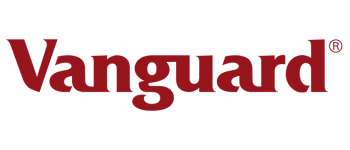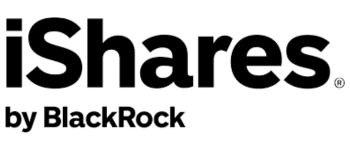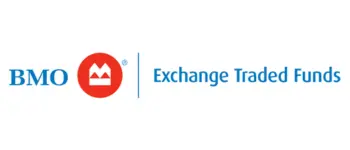Tap Into American Giants With These Canadian-Listed S&P 500 ETFs
Key takeaways
Tax Efficiency Considerations – Some ETFs, like Horizons HXS, offer a swap-based structure that can provide tax benefits for non-registered accounts.
Exposure to U.S. Market Growth – These ETFs provide Canadian investors with access to the S&P 500, offering exposure to leading U.S. companies across diverse sectors.
Hedged vs. Unhedged Choices – Investors can choose between CAD-hedged and unhedged versions, depending on their outlook on currency fluctuations.
One ETF I like way better than the ones on this list.Although Canada has a considerable amount of ETFs, there’s a crucial disadvantage to Canadian ETFs. The index composition results in a heavily-weighted exposure to three specific sectors.
- Financials
- Oil and Gas
- Materials
The solution? Exposure to the S&P 500
Many Canadians likely have a home country bias regarding their investments, meaning they have too much of their portfolios allocated to Canada.
Our country doesn’t have a large enough economy. It relies too much on fossil fuel and commodity production to be exclusively invested in, and as a result is going to be extremely cyclical.
But because we spend and earn our money in Canadian dollars, many investors may find swapping their CAD for USD inconvenient to buy US stocks or ETFs.
So, many fund managers have developed Canadian-traded S&P 500 ETFs, allowing for exposure south of the border without exchanging currency. These ETFs trade on the Toronto Stock Exchange, which adds to their convenience for Canadian investors.
What is the S&P 500?
The S&P 500 is the Standard & Poor’s 500 Index. This stock market index comprises the 500 largest companies in the United States.
Now, this isn’t a concrete definition. The index contains over 500 companies and doesn’t necessarily have to be the 500 largest. That is because there are strict indexing requirements that companies have to go through to get included.
Because of the diversity of companies in the index, the performance of the S&P 500 is often referred to as the barometer of the US economy. Many US-based portfolios use the S&P benchmark index to compare their investment returns.
You’ll see many of the world’s top companies inside the S&P 500, such as Apple, Microsoft, Amazon, Alphabet (Google), Tesla, Berkshire Hathaway, Nvidia, Johnson & Johnson, Meta Platforms, Visa, and so much more.
The most prominent S&P 500 ETF would be SPY, which is the SPDR S&P 500 ETF Trust. However, this fund trades in USD, so you’d have to convert before buying.
Is there a similar index in Canada?
Because we are not nearly as large as the United States, it wouldn’t make sense for us to have an index of our 500 largest companies here in Canada.
Alternatively, however, we do have the TSX 60. This Canadian ETF tracks the 60 largest companies in Canada and is the oldest ETF in existence, originating in 1990. The ticker for this index fund is XIU.
A more broad-based Canadian index is the TSX Composite Index, which tracks a more diverse index than the TSX 60. The number of holdings can differ based on how many stocks meet the index criteria, with approximately 220 different stocks making up the TSX Composite Index today.
With all that said, lets dive into some of the top TSX listed S&P 500 ETFs you can buy today.
What are the best Canadian S&P 500 ETFs to buy?
Low-cost, unhedged U.S. market exposure
Vanguard S&P 500 Index ETF (TSE:VFV)

VFV is a low-cost ETF that tracks the S&P 500 without currency hedging. It provides direct exposure to the largest U.S. companies and benefits from Vanguard’s reputation for efficient index tracking.
Currency-hedged S&P 500 exposure
Vanguard S&P 500 Index ETF (CAD-hedged) (TSE:VSP)

VSP is similar to VFV but with currency hedging, reducing exposure to CAD/USD exchange rate fluctuations. This makes it ideal for investors who prefer stability in Canadian-dollar terms.
Low-cost, unhedged S&P 500 ETF with BlackRock management
iShares Core S&P 500 Index ETF (TSE:XUS)

XUS provides broad-based exposure to the S&P 500 without currency hedging. It is a direct competitor to VFV, managed by BlackRock, the world’s largest asset manager.
Competitive low-fee alternative to VFV/XUS
BMO S&P 500 Index ETF (TSE:ZSP)

ZSP is another unhedged S&P 500 ETF with a similar strategy to VFV and XUS. Managed by BMO, it offers a cost-effective way to invest in the U.S. market.
Tax-efficient swap-based ETF structure
Global X S&P 500 Index ETF (TSE:HXS) & (TSE:HXS.U)

HXS (CAD version) and HXS.U (USD version) are unique swap-based ETFs that provide exposure to the S&P 500 without directly holding the underlying stocks. Instead, they use a total return swap, which can be more tax-efficient in non-registered accounts.
Overall, this list of the best S&P 500 ETFs in Canada is more of a brand battle than anything
Besides HXS, which does provide a unique proposition for those who don’t care much about the small distribution coming from the other funds, the decision on which S&P 500 ETF in Canada comes down to brand.
In terms of management fees, they vary by ten cents a year per $1,000 invested, a negligible amount. Vanguard, Blackrock, BMO, and Horizons are all excellent fund companies, and you can’t go wrong with owning any of these S&P 500 ETFs in Canada.
However, it’s essential to understand and check out your brokerage commissions. Some of these ETFs may be free to purchase on popular Canadian brokerages like Questrade and Qtrade.
In terms of hedging vs unhedged, that’s a story for another article. The past is not a guarantee of future results. However, on a historical basis, you would be much better off going with an unhedged version.
Now that the Canadian dollar is historically weak, however, some investors may choose to hedge their bets and then go unhedged when it recovers. Guessing currency movements is an extremely hard thing to do, however.
Also, an important note to understand. Because these trade in Canadian dollars but hold underlying US stocks or ETFs, the distributions could be subject to withholding tax even inside a registered account like an RRSP. It’s crucial to figure out your personal tax situation before making investments.
What is an ETF?
Exchange-traded funds, or ETFs for short, are one of the modern investor’s best investment tools. Many beginner investors try to learn how to buy stocks and don’t look at a more passive investing style like ETFs.
An ETF is an investment fund that tracks a particular sector, index, commodity, or basket of stocks and can be traded on an index just like any other stock. Investors can buy ETFs on their own or through a financial advisor, although that option usually comes with higher fees, which ultimately hurts long-term returns.
The beauty of ETFs is that investors can build a diversified portfolio with low investment capital. It is perfect for investors with limited capital or new investors (young and old) who want to diversify their risks and maximize gains.
Does the S&P 500 pay a dividend?
The S&P 500 index tracks the largest companies in the United States. However, when we look at some US S&P 500 ETFs and the Canadian S&P 500 ETFs below, there are distributions in the funds.
However, it is essential to note that these funds pay distributions, not dividends. And although this may seem like a trivial topic, it isn’t. A distribution can be made up of many things, such as a dividend, capital gain, interest income, or return of capital.
This distinction is especially important when paying income taxes, as different types of income are taxed differently.
For investors who just want to reinvest their dividends, it’s relatively easy to set an S&P 500 ETF to have automatic reinvestment of all dividends.
